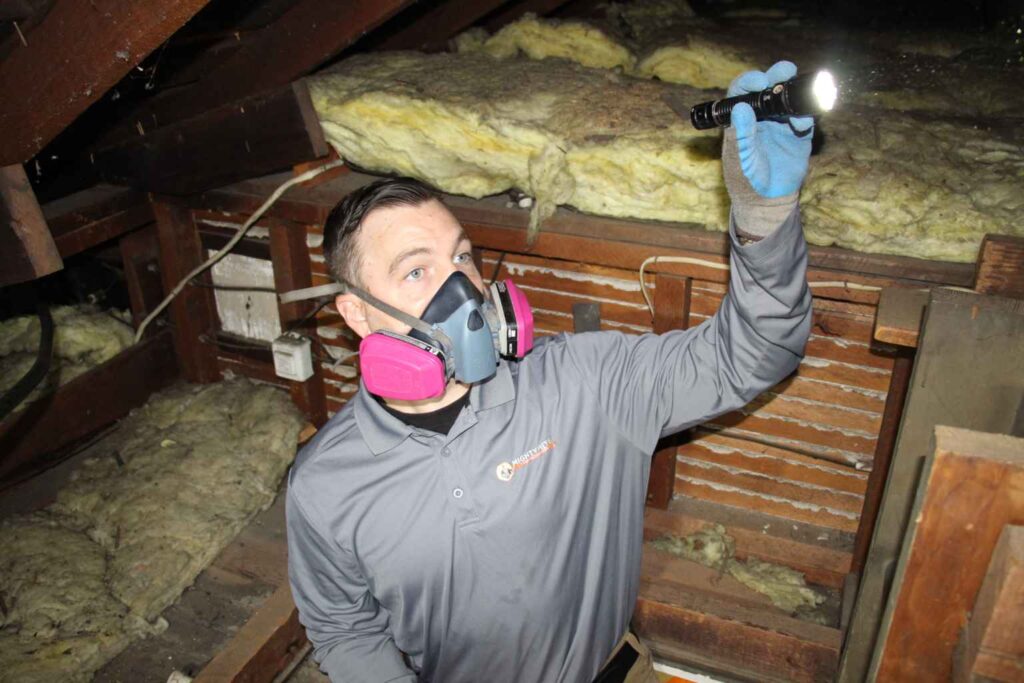Why a Complete Termite Inspection Must Include Attics and Crawlspaces

Complete Termite Inspection Must Include Attics and Crawlspaces
A termite inspection can be a powerful tool in termite control, but only if it’s thorough. If an inspector sticks to the main areas of the house, failing to address the attics and crawl spaces, there is a very real danger that something will be missed. These cramped, often damp spaces provide a hospitable environment for termites, and skipping over them can leave the home vulnerable.
How Are Termite Inspections Done and How Are They Completed?
Signs of termites are often easy to spot. Mud tunnels on the side of a house, pinprick holes, and hollow-sounding wood are all indications of an infestation, as are discarded termite wings on windowsills and around door frames. However, for a professional termite inspector, the search for termites should go much deeper than this. Experienced termite inspectors know where termites are likely to be found, and will perform a complete inspection, checking for signs of subterranean termites along the perimeter of the house, at the foundation, in the basement, attic, and crawlspaces. For drywood termites, the inspector will carefully examine exposed wood, hardwood floors, attics, crawlspaces, and eaves. Additionally, the termite inspector will inspect exterior wooden structures, such as gazebos, decks, and sheds.
What Home Inspectors Look for in the Attic and Crawlspace
If you are buying a home, there will be a home inspection by a qualified inspector. When this inspector goes into the attic and crawlspace, what is the goal?
In the Attic:
- The inspector checks whether the attic has sufficient insulation to keep the home energy-efficient and whether it’s in good condition.
- Ventilation is assessed because an attic that is poorly ventilated can trap moisture and heat, raising energy costs and promoting mold growth and wood rot.
- From inside the attic, the inspector can also identify roof issues, including leaks, stains, rotting wood, and compromised joists.
- A home inspector will also briefly look for signs of rodents, insects, or birds, such as nesting materials, droppings, or chewed wires.
In the Crawlspace:
- The biggest thing inspectors look for is moisture and water damage, as crawlspaces are prone to them.
- The inspector will also thoroughly assess foundation issues, including cracks, shifting, sagging, and other structural concerns.
- Exposed pipes will be examined for leaks and corrosion.
- As in the attic, the inspector will check for droppings, nests, chewed materials, and other indications of pest activity.
- The insulation and ventilation in the crawlspace are as crucial as in the attic so the inspector will check those as well.
Questions to Ask Your Inspector
Not all “free inspections” are created equal. Some companies only offer “limited inspections,” checking just the areas you point out. For true peace of mind, ask:
- “Will your free inspection include the attic and crawlspace?”
- “Is this a complete inspection of the entire property?”
- “Will you provide a detailed report of all findings?”
MightyMite Termite specializes in full home inspections, covering every area—including attics and crawlspaces—to ensure nothing is missed.
Why Attics and Crawlspaces Matter in a Termite House Inspection
A termite inspection and a home inspection are different because a home inspector isn’t explicitly looking for termites. A termite inspector will check the attic because it’s a poorly ventilated, often damp space with wooden beams and possibly cardboard boxes, which are the perfect places for termites to hide. The crawlspaces have similar conditions and may also have wood-to-soil contact, which can offer direct access for termites.
Common Signs of Termites in Hidden Areas
Both the attic and the crawlspace in a home with a termite infestation are likely to have mud tunnels on the walls. It may also have structural damage due to exposed beams and easy access to the house’s wooden frame. Discarded wings are another tell-tale sign of termites in each of these spaces.
The Risks of Failing to Inspect the Attic for Termites and Ignoring Crawlspaces
Home inspectors do a good job, but they’re not typically termite experts, and they might not be aware of all the places to look for termite signs. A qualified termite inspector knows the habits of termites, which provides an advantage when seeking them out. But what if the inspector finds evidence of termites in the central part of the house and decides to look no further, but talk to the homeowners about treatment? Does it matter if the house will be treated anyway? It absolutely does, because the inspector needs to know the full extent of the infestation to treat it properly. Two termites can start a new colony, so it is vital to make sure the termites are entirely gone.
Choosing the Correct Termite Inspection Company
Before you schedule a free inspection with a termite control company, ask questions about what they consider a complete inspection. The inspector should go over the entire interior and exterior of your home, including the attic and crawlspace. Talk about treatment plans, too, because some companies give a brief inspection and then recommend tenting. The truth is that tenting doesn’t work for all types of termites, and your termite control plan should be customized for the termites in your home. Ask about their warranties, too, and don’t settle for anything less than a full structure warranty, which covers reinfestation anywhere in your home.
Benefits of a Comprehensive Inspection
When you have a comprehensive inspection from a qualified termite inspector, it will indicate the full extent of termites in your home. A reputable termite control company will send an inspector to inspect every part of your home, then create a customized treatment plan for your particular infestation. A good termite control company will offer a variety of treatment options to ensure termites are completely eradicated from your home and will back their work with a strong warranty.
Call for a Free Termite Inspection from MightyMite Termite Services
When you are ready for your home to have a comprehensive and free termite inspection, call the termite control professionals at MightyMite Termite Services. At MightyMite, we’ve earned a reputation as experts in California termite control. We perform termite inspections to ensure your home is free of termites and work hard to help you keep it that way, using naturally derived, environmentally low-impact termite treatments. We diagnose and treat infestations with the most effective methods and unmatched warranties, solving your termite problems the first time, with an industry-best “no call-back rate.” That, combined with our experience, technology, and highly trained professional staff, makes us the leading extermination company in the Bay Area. We understand that your home is your most important investment, so we work hard to provide excellent service by using best practices to solve our customers’ termite problems. To schedule an inspection or learn more about our services, contact us through our website.







